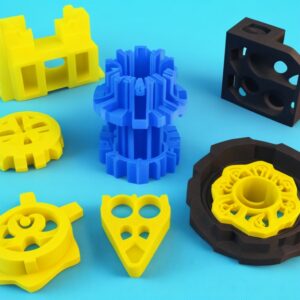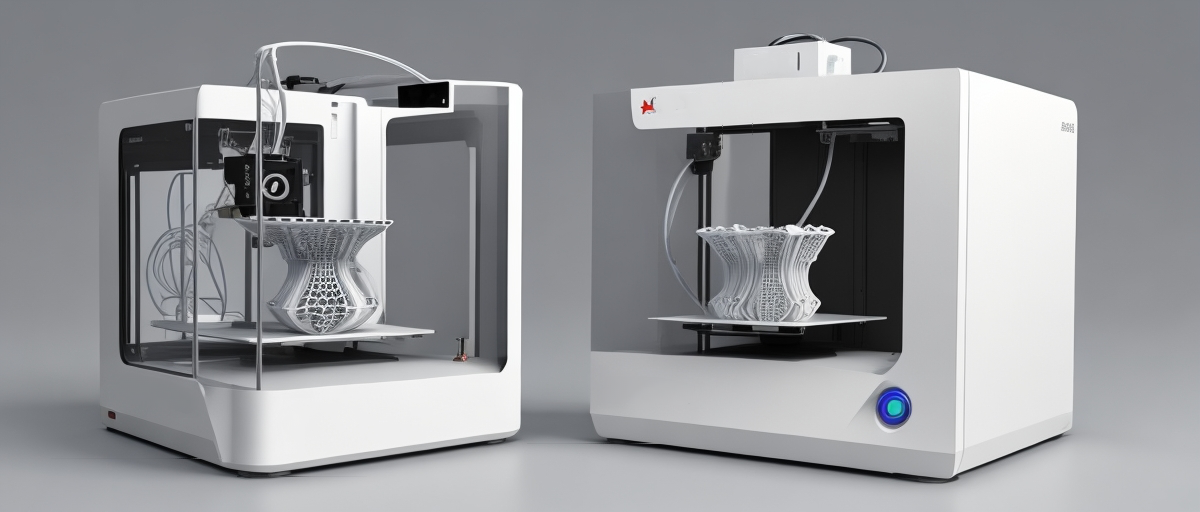The traditional methods of producing molds and dies could be slow, often riddled with multiple iterations to achieve the desired result. 3D printing provides rapid prototyping capabilities. With 3D printed molds and dies, designers and engineers can drastically reduce the development time from weeks to mere days, facilitating faster iterations and instantaneous feedback.
Cost Reduction in Manufacturing

The economic advantages of 3D printing in manufacturing extend beyond reducing material waste and the initial investment in tooling. By adopting additive manufacturing, companies can bypass many of the traditional fixed costs associated with production, such as the setup, operation, and maintenance of heavy machinery. 3D printing allows for on-demand production, which means that inventory can be kept to a minimum. This reduction in inventory translates to lower storage costs and less capital tied up in unsold stock, optimizing cash flow for the business.
3D printing is less labor-intensive than traditional manufacturing techniques, which often require skilled machinists and operators. With computer-aided design (CAD) software and 3D printers, it’s possible to automate much of the production process, thus allowing for a leaner workforce that can manage multiple printers simultaneously, further driving down per-unit manufacturing costs.
The versatility of 3D printing additionally enables manufacturers to consolidate multiple parts into single, more complex assemblies that would otherwise need to be produced and assembled through more costly methods. This consolidation can reduce the number of production steps, shorten assembly time, and lead to both time and cost savings in the manufacturing process.
Fast prototyping with 3D printing also tends to accelerate the entire product development cycle, which has indirect but significant cost benefits. With quicker design verification and concept approval, companies can avoid the prolonged expenses that come with extended research and development phases. The increased speed at which products can reach the market improves profitability and allows businesses to more rapidly recoup their investment in product development.
The adaptability of 3D printing technologies is beneficial when it comes to custom or limited-run productions. In traditional manufacturing, custom parts often require unique tooling, which is cost-prohibitive for small production volumes. 3D printers can switch between designs with minimal setup change, making them ideal for creating bespoke parts or for small series productions without a dramatic increase in cost.
The integration of 3D printing into manufacturing streams serves to greatly reduce costs across multiple fronts, contributing to more agile, efficient, and competitive manufacturing operations. By embracing this technology, manufacturers are positioned to thrive in markets where customization, speed, and sustainability are increasingly valuable.
Material Diversity and Customization
The material diversity provided by 3D printing encompasses a broad spectrum, ranging from common thermoplastics like ABS and PLA to advanced materials such as PEEK and Ultem, which are known for their high strength and temperature resistance. Metal 3D printing, or additive manufacturing, leverages materials such as titanium, stainless steel, and Inconel, making it possible to produce components capable of withstanding extreme environments found in aerospace, automotive, and medical applications.
The development of composite materials, which blend plastics with additives like carbon fiber, glass fiber, or Kevlar, has enhanced the mechanical properties of 3D printed parts, making them lighter, stronger, and more durable. With these options, engineers can design molds and dies that are cost-effective and optimized for performance, with considerations such as weight reduction and enhanced strength being prime drivers of this optimization.
Customization is at the heart of 3D printing’s appeal, allowing for precise control over material properties such as porosity, rigidity, and heat resistance. This means that molds and dies can be fine-tuned to produce the highest quality parts with properties tailored to specific manufacturing processes. For example, in injection molding, a mold might require certain areas to be more heat conductive to achieve uniform cooling, which can directly affect the quality of the final product. By custom mixing materials or creating gradient structures through 3D printing, manufacturers can achieve these detailed specifications.
The ability to engineer custom geometries is another aspect where 3D printing excels. Internal channels for cooling or heating systems, which are challenging to create with traditional subtractive manufacturing methods, can be easily integrated into the design of 3D printed molds and dies. These innovations improve the efficiency and lifespan of the mold and also have a substantial impact on the molding process itself, such as reducing cycle times or enhancing the precision of the molded parts.
The rise of digital inventories and on-demand manufacturing has been facilitated by the customization capabilities of 3D printing. Companies no longer need to physically stockpile a vast range of molds or dies; instead, they can maintain a digital library of designs that can be printed as needed, further reducing storage costs and lead times. This flexibility is particularly advantageous for producing replacement parts or customizing products for niche markets where demand may be unpredictable or variable.
The expansive material options and customization possibilities afforded by advancements in 3D printing technology have opened new horizons for manufacturing. The industry is now better equipped to address complex design challenges, produce parts with enhanced functionality, and offer customized solutions that were previously impossible or financially unviable. As materials science continues to evolve alongside 3D printing technologies, the potential for innovation in creating tailored molds and dies seems limitless, promising an even more robust and dynamic future for the manufacturing sector.
Consistent Quality and Precision
The precision of 3D printing stems from the layer-by-layer construction process, which can be meticulously controlled by computer software. Modern 3D printers are equipped with fine resolution settings that enable the production of features with extremely tight tolerances, often down to a few micrometers. This level of detail ensures that the surfaces of molds and dies are smooth and that the dimensions are precise, which is especially important when molds must mate perfectly or when dies must align with other parts in a manufacturing system.
This control over the production process enhances the quality of the molds and dies themselves but also directly translates to the quality of the parts they produce. For parts that require high accuracy, such as those used in the medical, aerospace, or precision engineering industries, it is imperative that the tools used in their creation meet exacting standards. 3D printing technologies assure that every iteration of a part is consistent with the last, eliminating much of the variability found in traditional manufacturing methods where tool wear or operator error can introduce discrepancies.
Advanced 3D printing systems are equipped with self-monitoring capabilities, using sensors and feedback mechanisms to make real-time adjustments during the print process. This ensures the printer maintains continuous precision and detects any potential errors before they become significant issues. Apart from ensuring consistency across multiple prints, this also results in higher overall reliability in the manufacturing process.
The uniformity in production afforded by 3D printing is of great benefit when scaling operations from prototype to full production. In conventional scenarios, transitioning from prototyping to mass production often requires retooling or creating new molds, which could introduce variations. With 3D printing, the same digital file used for prototyping can be employed for production, ensuring that the first part is identical to the last, regardless of volume.
Industry certification standards for quality management, such as ISO 9001, are placing an increasing emphasis on consistency and traceability in manufacturing. 3D printing aligns well with these requirements as each part’s specifications, including the machine parameters and material batch information, can be logged and tracked easily. For industries requiring stringent documentation and quality assurance, such as automotive or aerospace, the repeatability and traceability of 3D printing offer a significant advantage.

